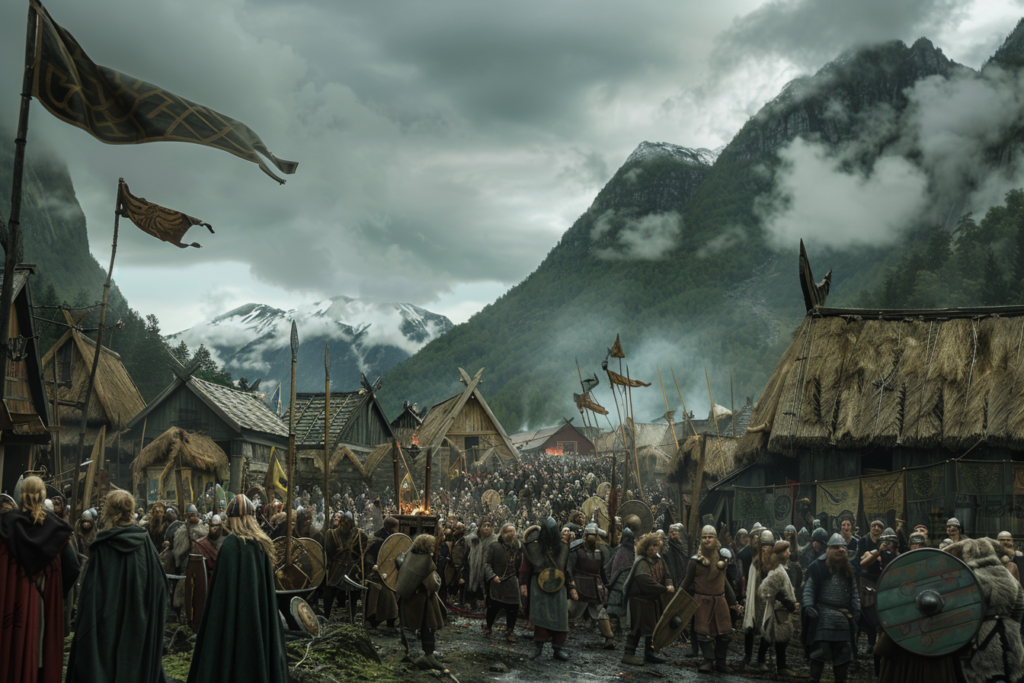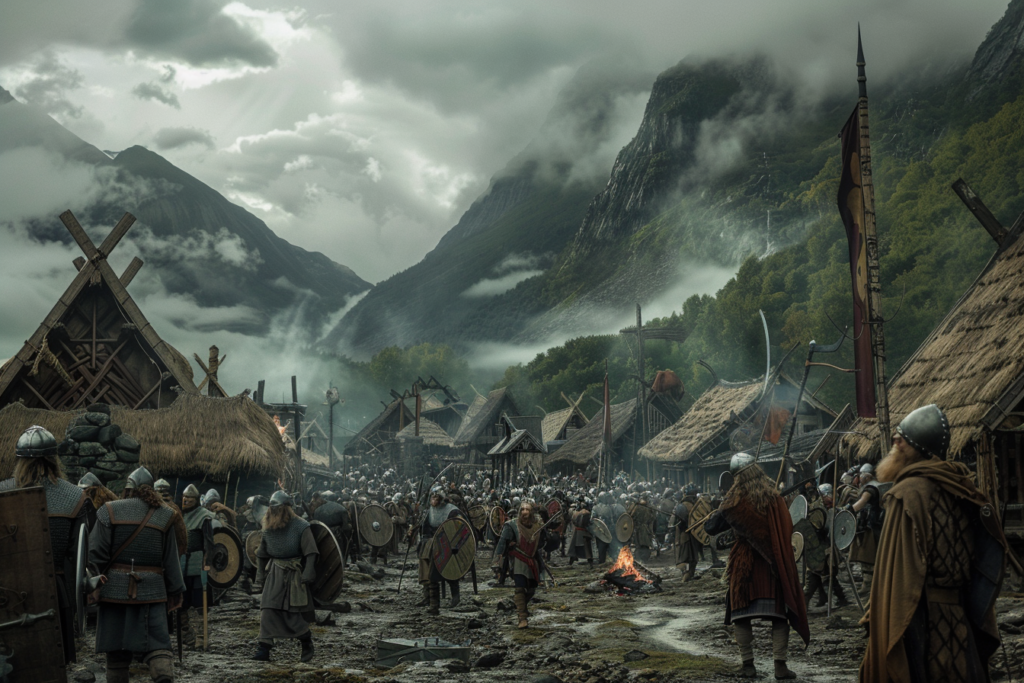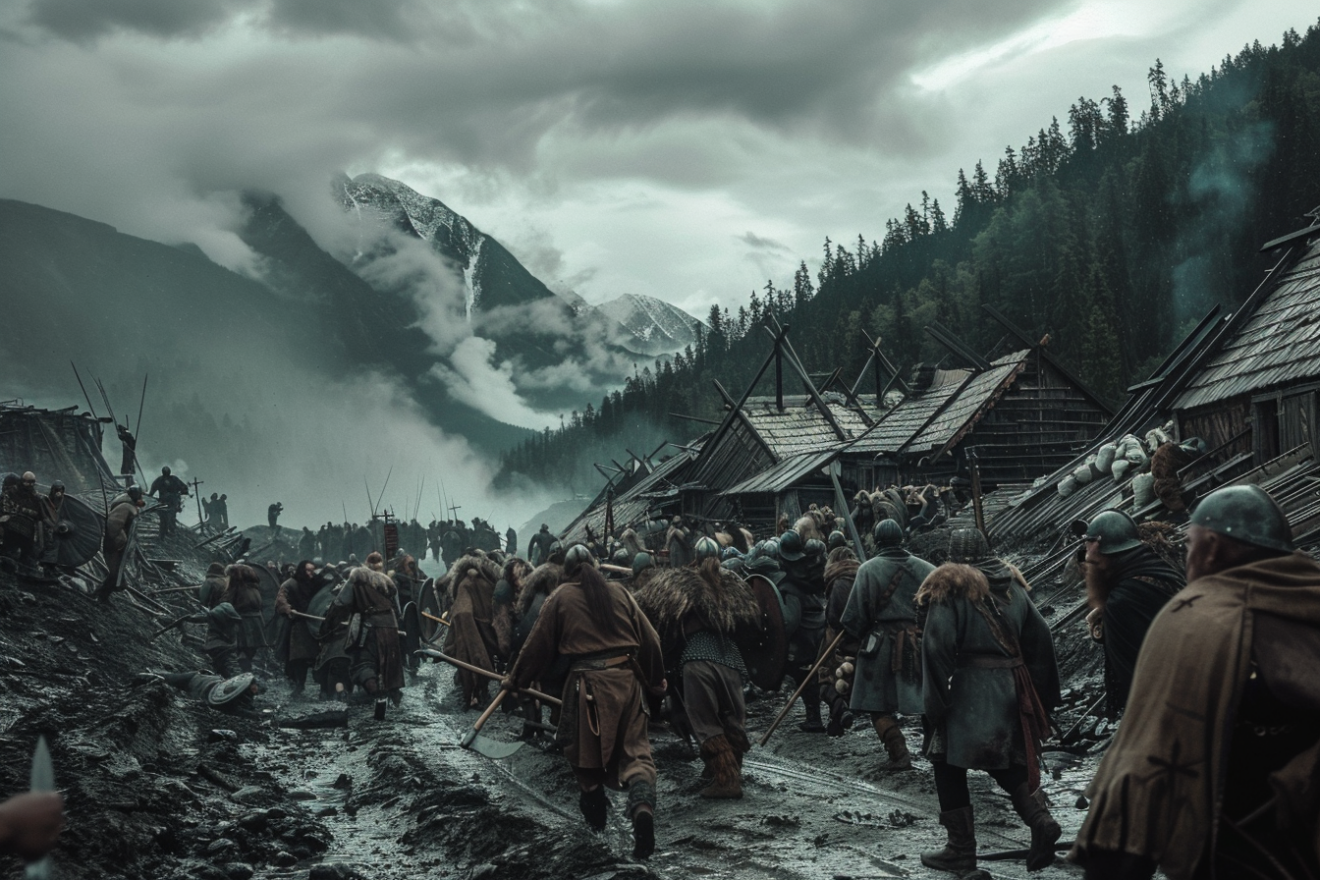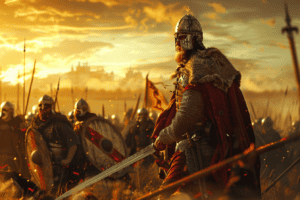During the Viking Age, warfare was a way of life for many Scandinavian tribes. While their raids on coastal towns and monasteries are well known, the Vikings also engaged in more prolonged conflicts, including sieges.
Siege warfare was a crucial part of medieval warfare. Castles and fortified cities offered protection to both the local population and armed forces. However, the Vikings’ tactics during sieges were often brutal and unrelenting.

One question that has arisen regarding Viking siege tactics is whether they used starvation as a strategy. The idea of starving out an enemy is not a new one, and throughout history, armies have used it to great effect. But did the Vikings employ this tactic during their sieges?
While there is no definitive answer, some evidence suggests that they did. The Vikings were known for their ability to sustain themselves during long voyages, and it stands to reason that they would have used this skill to their advantage during a siege.
Viking Siege Methods: A Strategic Overview
Understanding Viking Warfare
Viking warfare was a complex and sophisticated system of military tactics that allowed the Vikings to conquer and pillage much of Europe during the Viking Age (c. 790-1100 CE).
The Vikings were known for their use of ships, which gave them a significant advantage in terms of mobility and speed. They were also skilled warriors who employed a range of weapons and tactics to achieve their goals.
The Role of Siege in Viking Conquests
Siege warfare was an essential component of Viking conquests. The Vikings used a range of siege tactics to overcome fortified cities and strongholds.
One of the most effective tactics employed by the Vikings was starvation. The Vikings would surround a city or stronghold and cut off all supply lines, including food and water. This would force the defenders to surrender or face starvation.
The Vikings were also skilled at building siege engines, such as catapults and battering rams, which could be used to breach walls and fortifications. They would also dig tunnels under walls and fortifications, which could be used to collapse them.
Starvation as a Tactical Choice

Siege warfare is one of the oldest forms of warfare, and it has been used for centuries to capture fortified locations such as cities, castles, and fortresses.
One of the most brutal tactics used during a siege is starvation. The Vikings were known for their raiding and pillaging, but did they use starvation as a siege strategy? Let’s take a closer look.
Psychological Impact of Starvation
Starvation as a tactic is not just about depriving the enemy of food and supplies. It is also about the psychological impact it has on the defenders.
When a city is under siege, the inhabitants are cut off from the outside world, and they are forced to rely on their own resources. As food and supplies dwindle, desperation sets in, and morale drops. The defenders become more susceptible to surrender or making rash decisions.
The psychological impact of starvation is not limited to the defenders. The besiegers also feel the effects of the siege. The longer a siege lasts, the more resources the besiegers must devote to the effort. This can lead to disease and other logistical problems, which can weaken the besiegers and make them more vulnerable to counterattacks.
Starvation vs. Direct Assault
When considering whether the Vikings used starvation as a siege strategy, it is important to compare it to direct assault.
Direct assault is a risky strategy that involves attacking the enemy head-on. It requires a significant amount of resources and manpower, and it can result in heavy casualties.
Starvation, on the other hand, is a more subtle strategy that can be just as effective. By cutting off the enemy’s food and supplies, the besiegers can weaken the defenders without risking their own forces. It is a slower strategy, but it can be more effective in the long run.
Historical Accounts of Viking Sieges

Sieges in England and Europe
The Viking Age was a time of raiding and conquests across Europe, and the Vikings were known for their brutal siege tactics.
In England, the city of York was famously besieged by the Vikings in 866 AD, and the town of Lindisfarne was raided in 793 AD. The Vikings used a combination of brute force and psychological warfare to terrorize their enemies, often resorting to starvation as a siege strategy.
In Europe, the Vikings also engaged in numerous sieges, including the siege of Paris in 845 AD and the siege of Pavia in 774 AD. The Vikings were particularly skilled at riverine warfare, and their longships allowed them to penetrate deep into enemy territory.
Famous Viking Sieges and Their Outcomes
One of the most famous Viking sieges was the siege of Paris in 845 AD. The Vikings attacked the city with a fleet of 120 ships and besieged it for over a year. The city was eventually saved by a combination of diplomacy and military force.
Another famous siege was the siege of Iona in Scotland in 802 AD. The Vikings attacked the monastery on the island of Iona and killed many of the monks there. The attack was part of a larger campaign of Viking raids in Scotland.
The Evolution of Siege Tactics in the Viking Age

From Raids to Refined Siege Strategies
The Vikings are known for their raiding expeditions across Europe during the 9th to 11th centuries. However, as their influence grew, so did their tactics. The Vikings began to refine their strategies and develop siege tactics to capture fortified settlements.
One of the key factors in the evolution of Viking siege tactics was the use of siege engines. The Vikings were known for their expertise in shipbuilding, and they used this knowledge to create floating siege engines such as battering rams and siege towers. These engines allowed the Vikings to breach the walls of fortified settlements and gain entry to the enemy stronghold.
Another significant factor in the development of Viking siege tactics was the use of starvation as a strategy. During a siege, the Vikings would surround the enemy settlement and cut off their food and water supply. This tactic was effective in weakening the defenders and forcing them to surrender.
Influence of Viking Tactics on Medieval Warfare
The Viking Age had a significant impact on medieval warfare. Their tactics and strategies were adopted by other European powers.
The use of siege engines and starvation as a strategy became common in medieval warfare. It is believed that the Vikings played a significant role in the development of these tactics.
Furthermore, the Vikings were known for their advanced combat tactics and strict military organization and discipline. These qualities contributed to their successful raids and siege operations and were also adopted by other European powers.
In conclusion, the Vikings evolved from raiders to refined siege strategists during the 9th to 11th centuries. Their use of siege engines and starvation as a strategy had a significant impact on medieval warfare, and their tactics and strategies were adopted by other European powers.










Add Comment